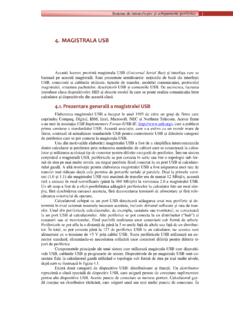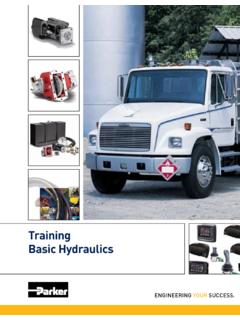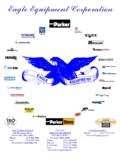Transcription of 5. Printers - utcluj.ro
1 1 Input/Output Systems and Peripheral Devices 5. Printers This laboratory work presents the main types of Printers , the general structure of a printing equipment, and the operating principle of inkjet, electro-photographic, phase-change, and dye-sublimation Printers . The laboratory work introduces the PostScript and PCL languages used for controlling the Printers , and describes the steps required to communicate with Printers connected to a USB port. Printer Types There are several classification criteria for the Printers . Part of these criteria is pre-sented next. A. Based on the Operating Principle There are two important categories: Impact Printers ; Non-impact Printers .
2 In the case of impact Printers , printing is performed by means of an impregnated rib-bon; therefore, there is a mechanical contact between the printing assembly, inked ribbon, and paper. The advantage of these Printers is that they allow to make several copies simultaneous-ly, but their drawback is that they are relatively slow and are noisy. A few types of impact Printers are the following: Selected-character Printers , in which the character set is placed on a body. The body can be a drum, chain, band, cylindrical or spherical head, daisy-wheel, or thimble. Dot matrix Printers , which can use needles or blade-hammers. In the case of non-impact Printers , there is no direct contact between the printing assembly and paper.
3 In some Printers , the image to be printed is first formed on an intermedi-ary support, and then it is transferred onto the paper. The advantages of these Printers are their high speed, high quality of the printed text or image, and low level of noise. Their disad-vantage is that they cannot create several copies simultaneously. Examples of non-impact Printers are the following: With electro-sensitive paper; Thermal; Electrostatic; Electro-photographic; Inkjet; With microfilm. B. Based on to the Printing Quality There are three quality levels of the printed documents: 2 5. Printers Low or draft quality; Medium or near-letter quality; High or letter-quality.
4 C. Based on to the Printing Speed According to this criterion, there are the following categories of Printers : Serial Printers , which print the characters one by one. Their speed is expressed in characters per second, and it can reach a few hundreds of characters per second. Line Printers , which print all the characters in a line simultaneously. Their speed is expressed in lines per minute, and it can reach several thousands of lines per minute for non-impact Printers . Page Printers , which contain buffer memories for one or more pages. Printing is per-formed by preparing the image to be printed for an entire page in memory, after which the paper is advanced continuously during printing.
5 Their speed may reach 50,000 lines per minute. General Structure of a Printing Engine The main functional blocks of a printing engine are the following: 1. Printing block; 2. Paper-feeding system; 3. Control system; 4. Interface. In addition to these blocks, other sub-assemblies might exist that are specific to vari-ous types of Printers . The control system of complex Printers may contain several processors (Figure ). Figure The control system of a complex printer. The control system of a printer may divide a physical page into several areas or logi-cal pages. Each area may be smaller or equal to a physical page and the areas may overlap, which allows to create complex pages.
6 In addition to defining the boundaries and position of each area within the page, some processing operations to be performed on the areas may also be specified ( , a rotation). Modern Printers can be controlled with a command language. The command proces-sor controls the data transfer between the computer and printer, interprets the commands, processes the data that describe a page, and stores these data in the page memory. The area processor performs the changes specified by the user upon the data in the page memory and 3 Input/Output Systems and Peripheral Devices transfers them into the area buffer, and from here towards the image processor, also referred to as Raster Image Processor (RIP).
7 This processor defines the status of each dot of the image that will appear on the paper, based on the data received and the stored character formats. The data prepared for printing are transferred into one of several accumulators. These are high-capacity memories, containing the bitmap of the image to be transferred onto the paper. To increase speed, several accumulators may be used. While one of the accumulators is used for printing, the second (or the others) may be loaded with a new page. Another proces-sor controls the printing block and the paper-feeding system. This processor interprets the commands referring to the printing format, which will also determine the paper movement.
8 Inkjet Printers Inkjet Printers are composed of the following main elements: Ink reservoir; Ink circulation system; Droplet generation and acceleration system; Droplet guiding system. Depending on the drop generation method, three types of inkjet Printers are used: 1. Continuous jet; 2. Intermittent jet; 3. Drops-on-demand. Each of these types uses one of the following methods for droplet guiding and placement onto the paper: Electrostatic deflection; Moving the print head or the paper and guiding the jet into positions corresponding to the dots that are to be printed; Selecting the nozzles of the print head. Continuous Jet Printers The droplet generation head is continuously supplied with ink under pressure by a pump.
9 Cone-shaped nozzles are used with diameters of the order of tenths of microns, usually made from ceramic materials resistant to wear and tear (Figure ). Figure Structure of a continuous jet printer. Due to the superficial tension, the jet tends to separate into independent droplets. This process is forced by varying the pressure on the back of the nozzle with a piezoelectric crystal. Consequently, a mechanical vibration of the ink reservoir casing is produced; if this vibration is continuous, the droplets will be generated continuously. 4 5. Printers In addition to this piezoelectric method of droplet generation, the thermal method can also be used.
10 Both methods are described in Section In order to guide the droplets, they are charged electrostatically with electrodes placed in the area of droplet separation. Since the inkjet is electrically connected to ground, the droplets formed are charged with a polarity opposite to that of the positive electrode. After separation, the droplets maintain their charge. The voltage of charging electrodes is controlled by the image generation block. The charge of a droplet should vary between limits largely enough to allow later deflection over the required distance. The maximum charge is limited by the need to avoid electrostatic rejection of neighboring droplets and droplet explosion , which may occur if the electrostatic rejection forces inside the droplet exceed the superficial tension.









